
views
X
Research source
Infections of the ear, especially of the middle ear, are a common cause of ear pain, particularly in children. If you or your child is suffering from an ear infection, there are ways you can relieve the pain.
Treating Ear Pain With Home Remedies
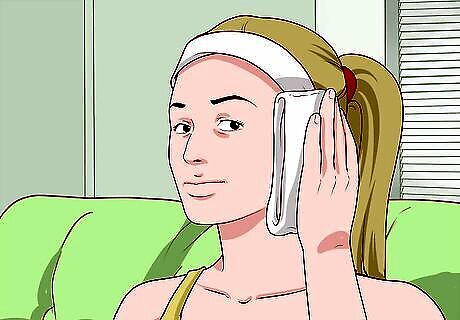
Try a warm compress. A warm compress may help alleviate ear pain. Use a clean washcloth soaked in warm water and place the washcloth over the ear. Replace the washcloth often, every 15 to 20 minutes, or as needed. You can also press a warm bottle or warm bag of salt over the ear.
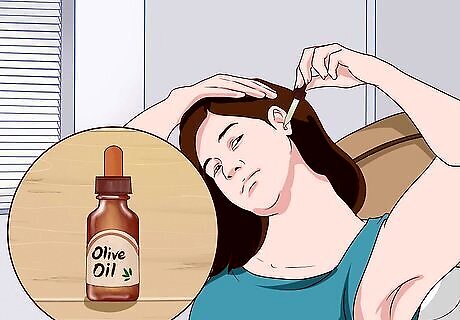
Try an olive oil treatment. Olive oil is a great home remedy for ear infection pain. Warm one teaspoon of olive oil, making sure that it does not get too hot. You don’t want to burn the ear. Using a medicine dropper, add three to four drops of the warmed oil to the affected ear. Repeat three to four times a day. Alternately, you can also soak a small piece on cotton in the olive oil and place the cotton in your ear. Repeat 3-4 times a day. Always warm the oils to about body temperature. You can test the temperature by dropping a bit of the oil on your wrist. Be very careful about warming the oil because it can cause serious damage to the inner ear if it is too hot. The best way to warm oils is to pour some into a dropper bottle and let the dropper bottle stand in an inch or so of heated water until it is warm.

Use herbal oils. A few herbal oils can act as natural antibiotics and have antiviral properties. Mullein oil is traditionally used for earaches, and has soothing and antibacterial properties. It can be purchased online or at an herbal store. Using calendula in ear drops can also be used to help relieve pain. Make sure to talk to your doctor before using any herbal remedies on children.

Try garlic. Garlic oil has antibacterial and antiviral properties and has been used for centuries to treat ear infections. You can make your own garlic oil by warming up one teaspoon of fresh, minced, or crushed garlic in one tablespoon of olive oil. Let it infuse for 15 minutes and run it through a fine mesh sieve. You can mix the remaining oil with an equal amount of olive oil or just use the garlic oil. Use three to four drops in each affected ear three to four times a day. You can also slice some garlic and put the garlic pieces in a cloth or paper towel. Place the garlic pouch on the ear. You can secure it by tying around your head with something, like a piece of cloth. Make sure whatever you put the garlic in allows the garlic to seep into the ear, but keeping it from directly touching the skin. Make sure to talk to your pediatrician before using garlic in your child’s ear.

Use ginger. Ginger can be used to relieve pain as well. Mince or crush one teaspoon of fresh ginger and add it to one tablespoon of olive oil. Let it infuse for 15 minutes and run it through a sieve. Use three to four drops in each affected ear three to four times a day. Speak with your doctor before using ginger to help your child’s ear infection.
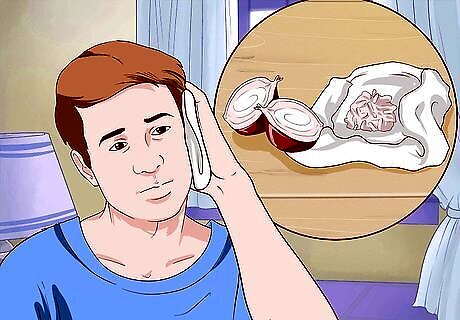
Make an onion compress. Cut up half an onion and gently heat it in some olive oil. When the onion is soft, let it cool before pouring it into a cotton cloth. Fold the cloth so that the onion doesn’t fall out, and place the compress over the ear, allowing the warm onion juice to flow into the ear. Leave on for 10 to 15 minutes. Repeat every three to four hours.
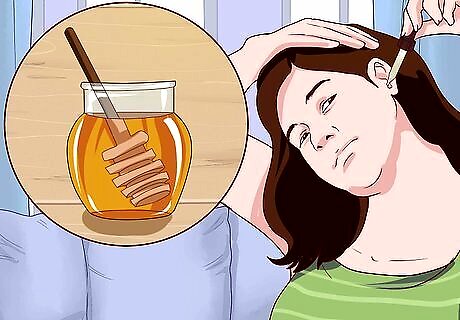
Use honey. Honey has antibacterial and healing properties, so you can use it to help relieve ear pain. Warm up some honey and put three to four drops into the affected ear. Make sure the honey is not too hot. You don’t want to burn your ear. Repeat three to four times a day.
Treating Ear Pain Using Additional Methods

Try over-the-counter medicine. There are a few different kinds of medicines you can buy to help relieve ear pain. Ear drops can help with the pain. You can also use acetaminophen (like Tylenol) or ibuprofen (like Advil) to help relieve pain. If you think you have an ear infection, you should talk to your doctor before trying OTC medications and home remedies. Do not use aspirin in children under the age of 2 years or in any child or teenager after the flu or the chicken pox. Giving aspirin to a child or teenager can lead to Reye's syndrome, which is a potentially fatal disease that causes the brain and liver to swell. The risk of a child or teen developing Reye's syndrome is even higher after the child or teen has had chicken pox or the flu.
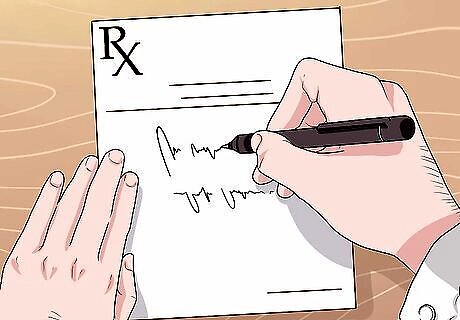
Get prescription medicine. Generally, antibiotics are only used in severe cases and not for every ear infection. If the pain or infection is bad enough, your doctor can prescribe eardrops or other medicine. For children younger than six months of age with an ear infection, antibiotics should be given immediately. Do not try to use home remedies for an ear infection on a child. Amoxicillin is the most commonly prescribed drug for ear infections. Your doctor may recommend taking 500 mg every 12 hours or 250 mg every 8 hours for a mild to moderate infection. For a severe infection (patients with fever) your doctor may prescribe 875 mg every 12 hours or 500 mg every 8 hours. Your doctor may also prescribe amoxicillin-clavulanate if your infection does not respond to amoxicillin or if you have severe ear pain and/or other symptoms, such as a high temperature. If you are allergic to penicillin, then your doctor may prescribe cefdinir, cefpodoxime, cefuroxime, or ceftriaxone instead. Streptococcus pneumoniae, Haemophilus influenzae, and Moraxella catarrhalis are bacteria that may be to blame for your ear infection. Taking antibiotics should attack the bacteria. However, if your infection does not seem to improve within 48 to 72 hours after starting antibiotics, then call your doctor.
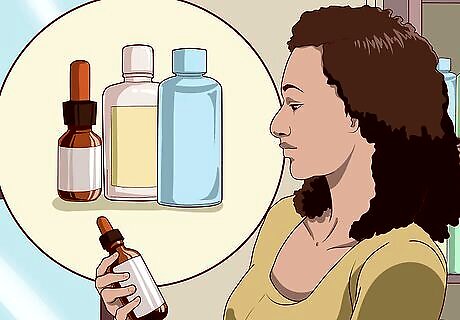
Purchase oil products. There are a number of commercial ear oil products that can be purchased in most stores or online. Examples of these include: Wiseways Herbals, NOW Ear Oil Relief, HerbPharm Kid’s Mullein/Garlic Ear oil, and Gaia Herbs Ear Oil with Mullein/St John's wort. Try these if you don’t want to make your own. Make sure to follow the directions for use. If your child has an ear infection, do not try to treat it yourself. Ear infections in young children are more likely to lead to serious complications, such as hearing loss, facial paralysis, brain abscess, and meningitis. Take your child to see a doctor right away if he or she is having ear pain.
Understanding Ear Infection Pain
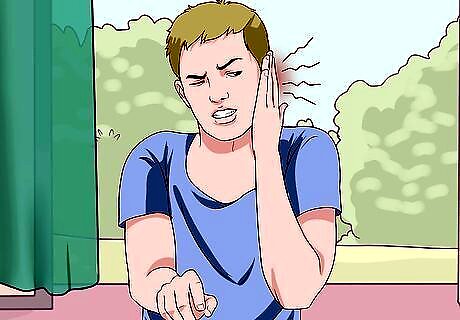
Recognize the symptoms of an ear infection. An adult or older child should be able to identify if she has an ear infection. An infant cannot, so you will have to look for symptoms. The symptoms of an ear infection include: Tugging or pulling at the ear (this may be the only sign in some infants) Ear pain, especially when lying down Irritability, crying, and fussiness Difficulty sleeping Hearing loss Fever of 100oF or higher Loss of appetite Drainage from the ear Dizziness or a feeling that the room is spinning Warmth, redness, or pain around the ear Swelling or itching

Monitor the risks for ear infections. Ear infections cannot be caught from another person. However, certain conditions can lead to ear infections. Be alert for ear infections if you or your child encounter any of the following conditions: Allergies, colds, or sinus infections Cold climates Changes in altitude or climate Pacifier or sippy cup use, or drinking a bottle while lying down Exposure to smoke Family history of ear infections
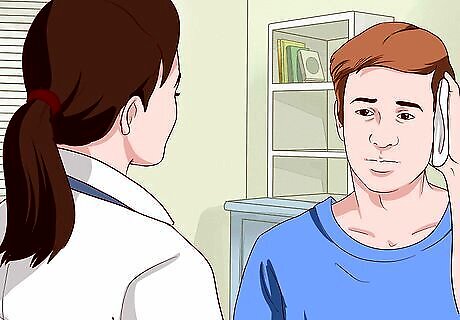
Contact your physician. Most ear infections can be treated at home. However, some ear infections are severe and need to be taken care of by a doctor. Call your doctor if any of the following apply: Fever of 100 degrees Fahrenheit or higher Severe pain Severe pain that suddenly stops. This may indicate a ruptured eardrum. Drainage from the ear Any new symptoms, such as dizziness, headache, swelling, or weakness in the facial muscles If the ear pain lasts more than 24 hours Change in hearing ability


















Comments
0 comment